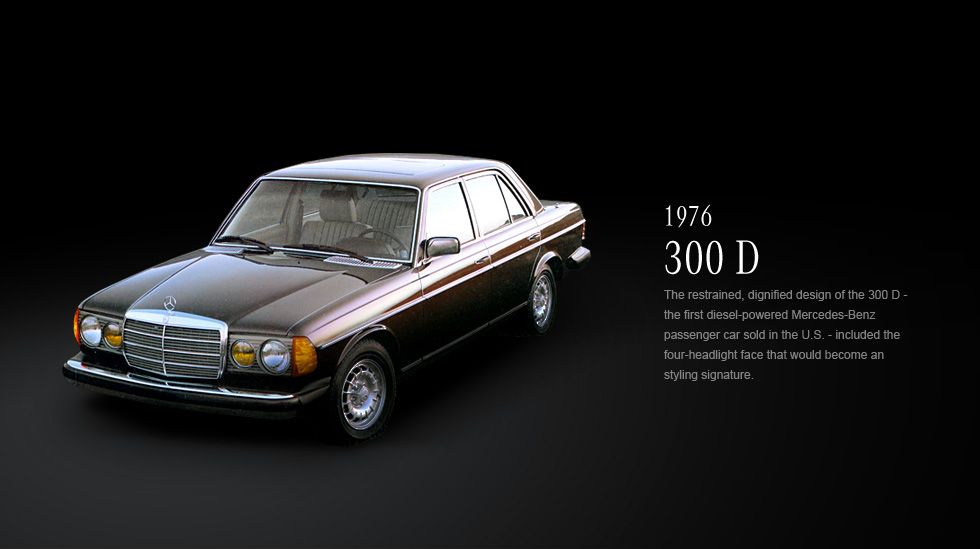Maker Of The World's First Diesel Powered Passenger Car Crossword

Alright folks, let's dive into a fascinating bit of automotive history and engineering: the Mercedes-Benz 260 D, widely recognized as the world's first diesel-powered passenger car. Now, before you start thinking about modern turbo-diesels with all their electronic wizardry, remember we're talking about 1936 technology here. It’s a world away from what you might be used to tinkering with, but the core principles are still surprisingly relevant.
The Birth of Diesel Passenger Cars
The story begins with Daimler-Benz's ongoing development of diesel engines for commercial vehicles. They recognized the potential for diesel's superior fuel economy and durability, but applying it to a passenger car was a considerable challenge. Gasoline engines of the time were generally lighter and offered better power-to-weight ratios – crucial for acceptable performance. Diesel engines, by nature of their compression ignition, tend to be heavier and operate at lower RPMs.
The 260 D wasn't just a whim. Daimler-Benz saw a market for economical taxis and private vehicles that could handle high mileage without breaking the bank. Remember, back then, fuel was expensive, and reliability was paramount. The 260 D was their answer.
Under the Hood: The OM 138 Engine
The heart of the 260 D was the OM 138 engine – a 2.6-liter (2545 cc) inline-four diesel. OM stands for "Oel Motor," German for "Oil Engine." This engine was a pre-combustion chamber design, which is significant. Let's break that down:
Instead of directly injecting fuel into the main cylinder (direct injection), the OM 138 used a pre-combustion chamber. This is a small chamber connected to the main cylinder via a small passage. Fuel is injected into this pre-chamber, where it partially ignites. The resulting pressure and burning fuel then shoot into the main cylinder, initiating the primary combustion process. This indirect injection method helps to smooth out the combustion process, reducing the characteristic diesel "knock" and making the engine run quieter and smoother, a critical requirement for a passenger car.
Key specs of the OM 138:
- Bore and Stroke: 90 mm x 100 mm
- Compression Ratio: 19:1
- Power Output: 45 hp (34 kW) at 3000 rpm
- Fuel Injection: Bosch PE4A50B200/1 injection pump
That 45 horsepower might not sound like much, but keep in mind the era. It was enough to propel the 260 D to a top speed of around 62 mph (100 km/h). More importantly, it achieved impressive fuel economy for the time – around 31 mpg (7.6 L/100 km). That's a significant advantage over comparable gasoline-powered cars of the era.
Fuel Injection System: Bosch Technology
The fuel injection system was crucial to the 260 D's success. Daimler-Benz relied on Bosch, a company already renowned for its expertise in fuel injection technology. The Bosch PE4A50B200/1 injection pump was a mechanical marvel. It's a multi-plunger pump, meaning it has one plunger for each cylinder. Each plunger precisely meters and pressurizes the fuel before injecting it into the pre-combustion chamber. The pump is driven by the engine's camshaft, ensuring accurate timing and fuel delivery.
Understanding the basics of a mechanical injection pump is vital if you ever plan on working on vintage diesel engines. The pump's internal components are incredibly precise, and even slight wear or misalignment can significantly affect engine performance. Calibration and maintenance of these pumps require specialized tools and knowledge.
If you're contemplating working on such a system, consider these points:
- Cleanliness is paramount: Diesel fuel systems are highly sensitive to contamination. Ensure your workspace and tools are spotless.
- Use the right tools: Don't try to jury-rig solutions. Invest in the proper tools for disassembling, calibrating, and reassembling the injection pump.
- Consult the service manual: The original service manual is your bible. It contains detailed instructions and specifications that are essential for accurate repair.
Chassis and Suspension
The 260 D was based on the Mercedes-Benz W138 chassis. It featured a robust ladder frame chassis, providing a solid foundation for the engine and body. Suspension was independent at the front, using coil springs and hydraulic shock absorbers. The rear suspension was a swing axle design, also with coil springs and hydraulic shock absorbers. This suspension setup offered a relatively comfortable ride for its time, considering the challenging road conditions of the 1930s.
The swing axle design, while common in older Mercedes-Benz models, can be tricky to deal with. It's important to inspect the axle joints and rubber boots regularly for wear and tear. Worn components can lead to unpredictable handling, especially in corners.
The Legacy of the 260 D
The Mercedes-Benz 260 D paved the way for the widespread adoption of diesel engines in passenger cars. While it wasn't a high-performance machine, it demonstrated the reliability, durability, and fuel economy advantages of diesel power. It proved that diesel wasn't just for trucks and buses; it could also be a viable option for everyday transportation. Its success spurred further development of diesel technology, leading to the sophisticated diesel engines we see in modern vehicles.
While you're unlikely to find a 260 D in your local junkyard, understanding its basic principles can be beneficial when working on any diesel engine, especially older or mechanically simpler designs. The 260 D is a testament to the ingenuity of early automotive engineers and a crucial milestone in the history of the automobile. Its legacy continues to influence diesel engine design and development to this day.
Think of it as the granddaddy of all those modern diesel SUVs and sedans you see on the road today.
So, next time you're wrenching on your diesel, take a moment to appreciate the pioneering spirit of the Mercedes-Benz 260 D. It's a reminder that even the most advanced technology has its roots in simple, yet ingenious, ideas.
